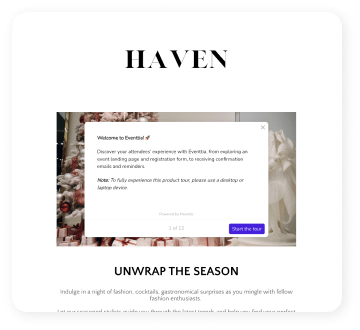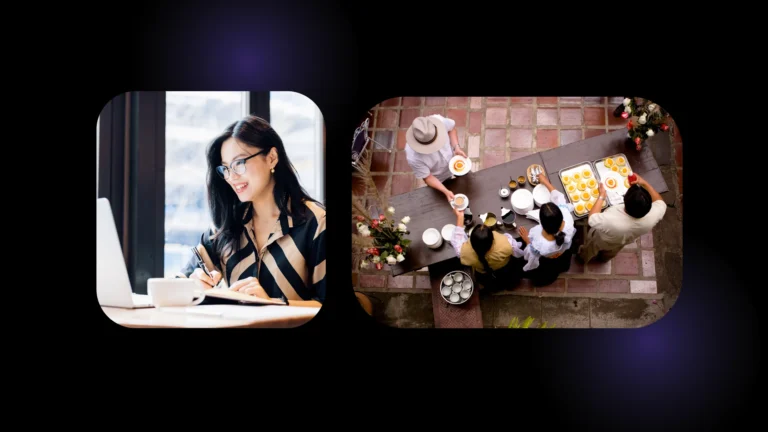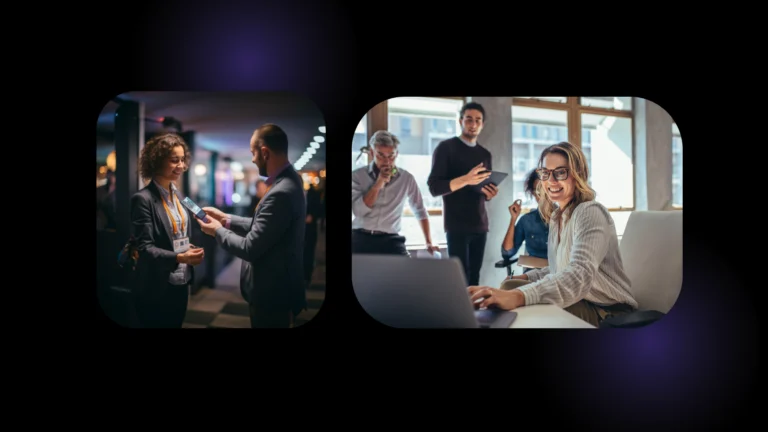On Wednesday, October 21st Spitche, MeltinLab, and Eventtia will be joining forces to host Get Together, a summit for marketers seeking new ways to connect, build communities, and create powerful experiences, all online.
Get Together brings industry leaders and marketing executives for an open dialogue around marketing in today’s current climate with an action-packed day of content, networking, and experiences.
To find out more about the event along with how you can register, please visit our website: https://get-together.eventtia.com/en/get-together

From virtual yoga classes to networking drinks and team building exercises, there are plenty of experiences at our disposal that can turn the online attendee experience from mundane to memorable.
That’s why it’s only logical that as event marketers we should be asking ourselves, ‘why aren’t we incorporating these ideas into our event strategy?’ And the answer to that lies in running your first online festival.
So what is an online festival?
An online festival is a mix of content and experiences. Sessions are split between an academic program, with keynotes, workshops, and everything else you’d expect from an online event, and a social program, with different types of online experiences which are all about letting your hair down and interacting with other attendees.
Compared to webinars and online events which are focused around content, online festivals are more immersive and come with added entertainment and interaction from the experiences. This can include yoga and meditation, dance classes, virtual cocktails, one-on-one networking, group discussions, and anything else that you have in mind, so get creative with it!
Let’s take a look at how to run one with this step-by-step guide.
Step 1. Define the program
To ensure that your two programs are aligned and coherent, first, define your topic and then microdissect it so that you can identify the different subtopics and create different content ideas based upon this for each program.
The academic program is content-focused, so consider the best ways for you to distribute it so that attendees get the most out of it. For example, if the focus is on education you’ll want to have lots of workshops and how-to tutorials.
Whereas the social program will be slightly different, here you’ll need to think about how you can enhance the attendee experience which could be anything from having a yoga break to a group networking session.
Finally, spend some time reviewing the program, making sure that both sides of the program complement each other and that they’re fully aligned with each other.
Step 2. Find sponsors
The first step to finding a sponsor is to align yourself with the sponsor goals and objectives. Ask yourself what do they want to achieve? Then outline everything that you’ll be able to offer and put this into different sponsorship packages.
There are plenty of offerings here, that range from having a sponsors logo at the log-in screen to sponsored experiences and speaking opportunities. That’s why before pitching this to potential sponsors, it’s vital that you know the value of each offering along with their USPs.
To find the sponsors, first, create a sponsors list and then narrow it down by cherry-picking the names that represent the key goals and image of your upcoming event. Finding sponsors is always time-consuming, so this should help save valuable time without sacrificing on quality.
Step 3. Identify the speakers and experiences
Speakers and experiences are the major pull factor for attendees, so finding the right ones can make or break an online festival. When reaching out to potential participants, make sure to build the entire outreach strategy around the big wins they will get by being a part of the event.
Find speakers and brands that are fully aligned with your vision, that way you’ll know that they can add real value to the attendee experience. Then when reaching out, the aim of the game is to ‘sell’ the idea to potential speakers and brands.
Make things easy by simplifying their work, you should already have an idea of what content you’ll be covering so pitch this to them and show them why they are needed at the event. It’s always a good idea to mention those other professionals who have agreed to participate in your event.
Finally, if you don’t have any other option, consider an incentive to get them on board. All these little tactics will increase your chances of packing your event program with interesting people who’ll have valuable stories to share with your virtual attendees.
Step 4. Identify your communication partners
To expand the reach of the event, add credibility, and ultimately drive more ticket sales, you’ll need the help of communication partners. Establish who your target audience is, then research and identify online networks with large databases that will help you to market your event directly to your ideal consumer. Use tools like Prowly and Anewstip to help you with this.
To find the right contact, do some digging on LinkedIn to find out who manages media partnerships in the organisation and then send them an email. Here, ask questions such as how big is their mailing list or how many monthly website visitors they get to see if they’re a good match.
Once this is confirmed, you can then offer them an affiliate deal with mentions, free tickets and a general discount code that they can use in exchange for newsletter mentions, editorial coverage, social mentions and so on.
Step 5. Create partner kits
Following on from the last point, when it comes to communicating your event to different partners you’ll want to prepare kits with the relevant assets. Depending on the setup of your online festival you’ll likely need to prepare kits for media, sponsors, and speakers.
There’s no set formula for what should be inside the kit but as a general rule of thumb, you should have a presentation explaining the event, visual assets for social media, and plenty of copy to support this. Here, the aim of the game is to educate your partners about the event and also make it as easy as possible for them to help you promote the event.
If you’re looking to drive ticket sales then you should also consider offering your partners a general discount code which they can use to share across social media. Event management software Eventtia, for example, has its own coupon module where you can create individual codes for each partner.
Step 6. Publish the event & start promoting it
Now that you’ve got everything in place, it’s time to share your event with the world. First things first, create a knockout landing page that has strong messaging and branding, containing all the details such as why to attend, the program, and registration.
Then it’s time to make the announcement, so use everything you have at your disposal meaning social media, newsletters, and email campaigns. Once this has been exhausted it’s time to think about how you promote your event from outside your circle.
Of course, having sponsors, media partners, and speakers promoting the event will play a big part in this, but beyond that, allocate budget to social media campaigns and also any paid media that can expand the reach further than your communication partners.
Step 7. The technical backstage
The last thing you want is a technical hiccup, so use your time before the event to familiarise yourself with the backstage of your virtual event platform. The more time you spend doing this, the more comfortable you’ll feel when the festival is live.
Chances are you’ll be using more than one platform to do this. For example, you might be using a streaming program like StreamYard which will be broadcast to Vimeo which then goes on to online event management platform‘s virtual stage. That’s why it’s worth mapping everything out and identifying how everything is going to work.
Finally, make sure that you test every single specification of the platform(s) that you’re using. One, for enhancing the attendee experience, and two, to feel as comfortable as possible on the big day. The more practice you get under, the more relaxed you’ll feel, so get plenty of it under your belt!
Step 8. Run tests with your speakers
Leading on from the last point, it’s important to invite your speakers in for a final run-through. Obviously, it goes without saying that the main priority for your speakers should be their speech, and not having to worry about the technicalities.
First, prepare an email explaining how everything is going to work. Will you be sending them a link for them to join? Or do they need a special access code? Whatever it is make sure that you’ve got all of the formalities covered because your speakers will be using this for future reference.
Secondly, schedule a test with every single one of your speakers, and this has to be compulsory. Testing everything out beforehand provides the perfect opportunity for them to set up their webcam and microphone before and familiarise themselves with the streaming platform that they’ll be using.
Step 9. Prepare the visual assets for the festival
It’s important to think about visual elements that apply specifically to the context of an online event. This means shifting your attention to video content, virtual stages, and engagement tools. These are the components of the event that attendees interact with and that’s why it’s vital to create them with visual elements in mind.
First, think about the basics such as how you’re going to integrate your logo and brand colours into each of these components. Then take it up a notch by adding animations and powerful overlays to your videos that will encapsulate your brand and reinforce your message.
Final thoughts
While online events are great at delivering content, it’s important to find new ways that we can enhance the attendee experience within the confines of the online world. And an online festival does exactly that.
If you’d like to experience an online festival for yourself, then join us on October 21st for Get Together. A showcase of online experiences including salsa dance classes, cocktail making with Chivas Regal, and a magic show from mentalist Daniel Fernandez.
To find out more about the event along with how you can register, please visit our website: https://get-together.eventtia.com/en/get-together






